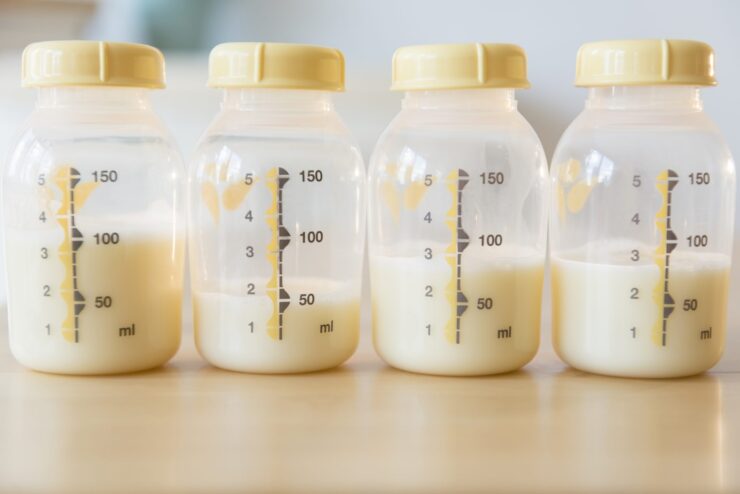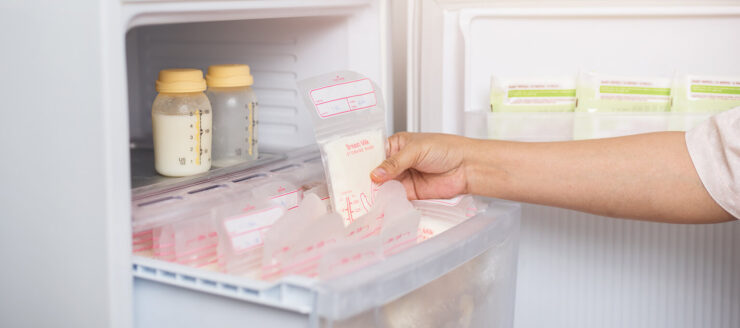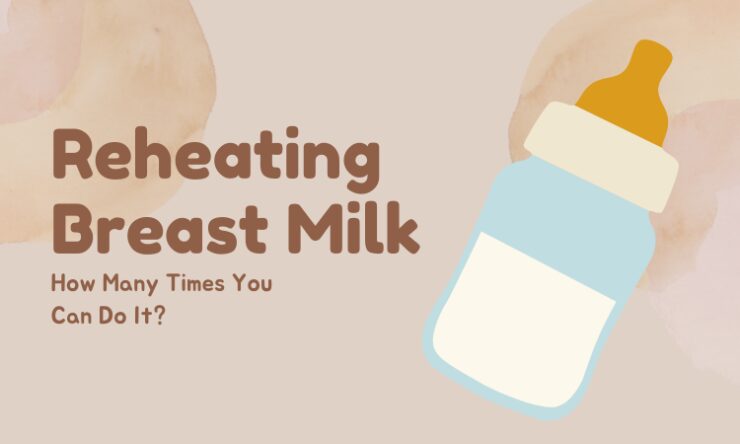It’s no secret that being a mom is not always sunshine and rainbows—it can oftentimes be extremely time-consuming and stressful as well. No matter if you’re a mom with a full-time job or a stay-at-home mom, your schedule is likely to be hectic. One of the most important tasks a mom has to perform daily is feeding her baby.
For new moms, this process can seem scary and nerve-wracking, especially because it’s something they aren’t experienced in and don’t want to mess up. Reading a dozen books and manuals can be helpful, but it will also take up a lot more time than you have to spare.
Since learning new tips and tricks on staying safe and being efficient in performing your mom-related tasks, such as feeding your newborn or pumping breast milk, is essential to all the new moms out there, we are here to help!
Forget about wasting time trying to find answers on your own, and let us walk you through the process of properly and safely reheating your breast milk for later use.
A Guide to Reheating Breast Milk the Safe Way— Can I Reheat It More Than Once?

You have to be extra careful when it comes to thawing and reheating breast milk—if done the wrong way, it can lose all its nutritive values and be rendered useless.
When preparing the frozen milk for consumption, the first step is to take it out of your freezer and leave it in the fridge overnight. Once the milk has completely thawed, you can use it to feed your baby, but only in the following 24 hours.
Here’s a step-by-step guide on how to safely go through this procedure once the frozen baby food thaws out:
- Fill a large bowl with warm water
- Put the sealed container with breast milk in the bowl so that the water covers it completely
- Leave the container there for a couple of minutes
- Pour the milk into a baby bottle and swirl it (but don’t shake it)
Once you complete the above-listed steps, the milk will be ready to use. You should always make sure it’s not too hot before feeding it to your baby.
If you are wondering how many times you can repeat this, the answer is—none. If you have any leftover milk that has already been reheated before, you should not put it back in the fridge or freezer—you should throw it out.
Reheating Breast Milk—What Not To Do
Although learning what to do when it comes to reheating breast milk is essential, learning what not to do is equally as important. By taking a look at the table below, you’ll discover what you shouldn’t do when it comes to this process and why those options are bad ideas:
| What Not To Do | Explanation |
| Don’t reheat the milk in the microwave | Microwaving your breast milk is one of the biggest no-no’s. Microwaves usually don’t heat food evenly, and that’s the main reason why reheating by using this method is not recommended. There could be hot spots that can burn your baby’s tongue or mouth, so make sure you follow the steps provided above for these purposes |
| Don’t freeze or reheat your milk more than once | Reheating your milk more than once, especially after your baby has consumed some of it, maximizes the chances of it getting contaminated with bacteria. Another reason why you shouldn’t reheat your milk several times is that each time you do so, the milk loses some of its nutritional value |
| Don’t put your finger into the bottle to check the temperature | Dipping your finger into the bottle is one of the easiest ways to contaminate your breast milk with bacteria. The safest way to check the temperature is to drop some of it on your wrist before feeding it to your baby |
How To Properly Store Breast Milk

The safest way to pump breast milk is by using a breast pump—either a manual or an electric one. Using it is much easier than using your hands, and it also takes way less time and effort. It is a safer and more recommended option as well, since the milk travels through the pump straight to the clean bottle, which is why the chances of it getting contaminated along the way are minimized.
Maybe you need milk storage bags, find it here!
Once you pump the milk, it is time to store it. You have a couple of storing options to choose from, including:
- Refrigerating it for up to 4 days
- Freezing it and keeping it stored like that for 6 to 12 months
If you choose to refrigerate the milk, you should make sure not to keep it in the door of your fridge. The temperature changes when you open and close the door, which can lead to the milk going bad or losing its nutritive value. For this reason, it is best to keep it on one of the shelves inside your fridge.
In case you decide to freeze the milk, it’s important to note that breast milk expands once frozen. This brings us to another tip—avoid filling the container or the bottle all the way up. Leave some space at the top but no more than an inch or two.
Make sure you don’t freeze large amounts of milk but only smaller portions, label your containers (including the date the milk was pumped), and put the containers in the back of your freezer so the milk doesn’t start to thaw out.
Key Takeaway
If you don’t want to breastfeed your baby and you would rather take a bottle out of your fridge or freezer and spend a few more minutes preparing it for consumption, you can. Reheating breast milk is a widespread practice—it can save loads of time, but you need to learn how to do it the right way.
By following the guidelines we previously explained, you can get some extremely useful tips and ensure your baby enjoys the food in the healthiest and most secure way.

